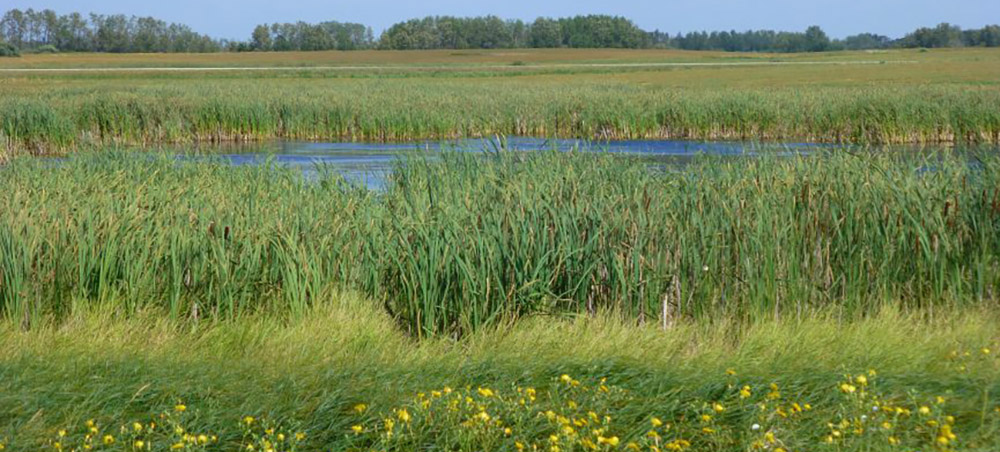
By Harry Brook
There is now proof that leaving sloughs and poor areas in grass and trees benefits the bottom line for farmers. A landscape ecologist has proof that leaving the wet, poor areas in perennial vegetation can boost yields in the rest of the field. These sites provide a place for pollinators and beneficial insects that contribute to yield. Those are your hidden, unpaid work force.
This is not just a lab result. A case study in Saskatchewan came to the same conclusion. It involved a field of about a square-mile in size. It had saline patches and low areas of about 50 acres, in total. Yield in most of the field was 60 bu./acre of wheat. Land adjacent to the saline areas only produced 25 bu./acre. When they planted the low and saline areas to perennial grass, they lost some yield but it improved their overall finances. Costs to seed both the good land and the poor soils was the same. Overall yield per acre increased as you dropped out the land where it was losing money.
On the production side, overall yield per acre was up. In all crops and cases, the loss in gross revenue from not farming the worst areas was far outweighed by the cost reductions. In all crops, this was the consistent result.
There are other benefits to be gained by seeding problem areas into perennial forage. Usually, these poor areas are a haven for weeds like kochia and foxtail barley, weeds that can tolerate higher levels of salinity. They can be a persistent problem in a field. By seeding perennial, salt-tolerant grasses in those areas, they can be removed or out-competed by the grasses, thusly dealing with the weed problem.
Over time, the forage can reclaim the saline area by drawing down the water table in the saline areas and rain slowly washing the salts out of the topsoil. This won’t happen unless you have permanent cover on the soil.
Another thing to consider is using a grassed area at the field entrance. There is clubroot in the county and by using a grassed entrance, you can help prevent the spread of clubroot from field to field by machinery. Most clubroot found in Central Alberta is found within 100 meters of the field entrance as infected soil is moved around by farm machinery. A grassed area at the entrance can contain the soil-borne infection and stop it being transferred through the field.
As you can see, there are many good reasons, both financial and agronomic, to seed saline and low production areas in a field to perennial forage. Save yourself the expense and reap the rewards of including grass and bush areas in your crop fields.
Harry Brook is Flagstaff County’s Agricultural Fieldman. He can be reached via email at: hbrook@flagstaff.ab.ca or by phone at: 780-384-4138.